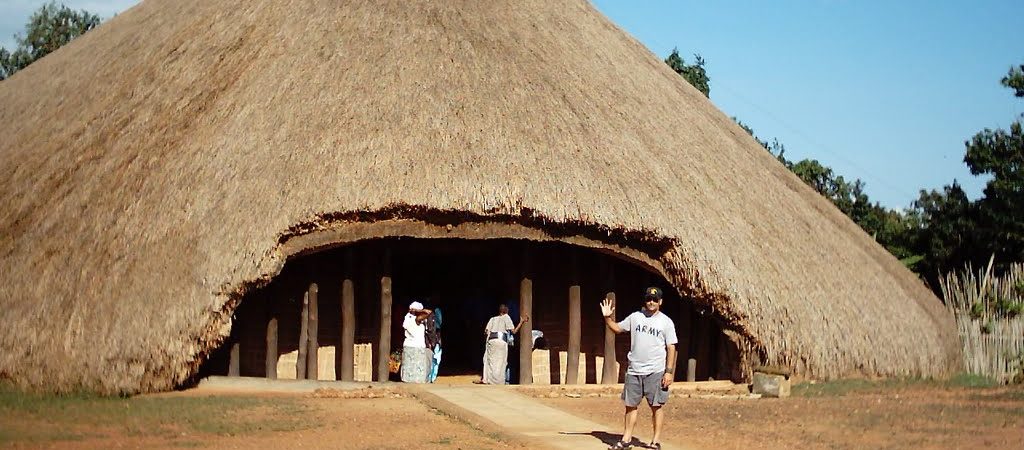Kasubi Tombs Boat Cruise: Seasonal Highlights for Birders
Where Heritage Meets the Call of Birds
To visit Uganda is to step into a world where history and nature intertwine with profound harmony. Among the country’s most cherished treasures stands the Kasubi Tombs, a UNESCO World Heritage Site revered as the spiritual heart of the Buganda Kingdom. While the tombs are primarily celebrated for their cultural and architectural significance, they are also deeply embedded within landscapes that resonate with natural beauty. When explored through a boat cruise experience, the setting transforms into an extraordinary avenue for birders—those passionate observers of avian life who seek not just sightings but stories told through feathers and flight.
The essence of a Kasubi Tombs Boat Cruise lies in the merging of cultural pilgrimage and natural exploration. It offers travelers the chance to appreciate a royal burial ground while simultaneously embracing the enchanting rhythm of Uganda’s waterways, where birds punctuate the silence with song, color, and seasonal migrations. To glide gently across calm waters under a canopy of tropical skies while observing herons, kingfishers, and migratory species in their seasonal abundance is to encounter Uganda in its purest form—where sacred heritage meets ecological wonder.
This essay explores the seasonal highlights for birders that define the Kasubi Tombs Boat Cruise, revealing how each time of year unveils new avian spectacles, layered with cultural resonance and natural grandeur.
The Setting: A Sacred Landscape
The Kasubi Tombs are located in Kampala, the bustling capital of Uganda, yet their significance stretches far beyond urban confines. Constructed in the 19th century, the tombs serve as the final resting place for Buganda kings, preserving traditions that are centuries old. Surrounding this sacred site lies a rich ecological fabric of wetlands, gardens, and waterways that extend into broader habitats teeming with life.
It is from these ecological fringes that the boat cruise experience emerges. The waters offer reflections not only of the skies above but also of the spiritual aura that surrounds the tombs. Birders who embark on this cruise discover that the tombs are not isolated relics of the past but living symbols of the relationship between humans, land, and nature. The presence of birds—eternal travelers of the skies—mirrors the continuity of life and culture celebrated at Kasubi.
Birding Along Uganda’s Waterways
Birding in Uganda is often celebrated for its diversity, with the country boasting over 1,000 recorded bird species. The waterways near the Kasubi Tombs provide essential habitats for both resident and migratory birds, making a boat cruise an ideal vantage point for enthusiasts. The waters reflect reeds and papyrus swamps, habitats that provide food, shelter, and breeding grounds for an array of avian life.
From the delicate dance of the African jacana striding upon floating vegetation to the dramatic swoops of the pied kingfisher, every moment on the cruise reveals dynamic bird behavior. The setting is tranquil, yet alive with constant activity, inviting birders to look closely, listen carefully, and appreciate the cycles of life unfolding before them.
Seasonal Highlights: A Year of Birding Wonder
The Dry Season: Clarity and Abundance
During Uganda’s dry seasons, typically stretching from December to February and again from June to August, the Kasubi Tombs Boat Cruise becomes a stage of clarity. Skies are clear, visibility is high, and birds are easily spotted as they gather near the water in search of food. The reduced foliage allows for unobstructed views, making this season particularly rewarding for photography.
Dry-season birding highlights include sightings of herons, cormorants, and egrets, all of which thrive in open waters. The calm surfaces of the rivers and wetlands also attract raptors such as the African fish eagle, whose piercing calls echo across the landscape, reminding birders of Uganda’s wild and untamed spirit. For many travelers, this season marks the perfect balance between cultural exploration at the tombs and natural immersion along the waterways.
The Wet Season: Breeding and Renewal
When the rains arrive between March and May and again from September to November, the waterways near the Kasubi Tombs are transformed into lush sanctuaries. The landscape is painted in vibrant greens, and bird activity intensifies with the breeding season. Nesting colonies of egrets and herons become more visible, while weaver birds construct intricate nests that dangle like ornaments above the water.
The wet season provides birders with the opportunity to witness life in renewal. Chicks emerge from nests, fledglings learn to fly, and the symphony of bird calls becomes more pronounced. While the rains may challenge navigation, they also bring the promise of spectacular encounters, rewarding those who venture out despite the weather. It is a season of abundance, not only in vegetation but in avian diversity.
Migratory Spectacles: International Guests
One of the most fascinating aspects of the Kasubi Tombs Boat Cruise is the seasonal arrival of migratory species. Between November and April, birds from Europe and Asia arrive to escape colder climates, adding to the already impressive local diversity. Species such as the barn swallow and common sandpiper are frequently observed, weaving Uganda into a global story of migration and survival.
For birders, this period offers a rare chance to observe international species side by side with Uganda’s endemic and resident birds. The waters become a meeting point of continents, where local traditions and global cycles converge. The migratory season reminds travelers of the interconnectedness of ecosystems, cultures, and the timeless passage of life across borders.
Cultural Echoes Within Birding
To embark on a Kasubi Tombs Boat Cruise is not merely to observe birds but to recognize the deep cultural symbolism that avian life holds within Ugandan traditions. Birds have long been revered in Buganda culture, often associated with messages, omens, and spiritual significance. The call of certain species is interpreted as a sign of change, while others symbolize continuity and protection.
As birders watch kingfishers dive for fish or hornbills soar above the waterways, they are unknowingly engaging in a dialogue with cultural narratives that have persisted for generations. The tombs, as places of ancestral remembrance, mirror the presence of birds—both representing continuity, guidance, and the eternal connection between the physical and spiritual worlds.
The Photography Dimension: Capturing Feathered Beauty
Photography becomes a vital companion on the Kasubi Tombs Boat Cruise, where birders are invited to capture fleeting moments of avian life. The contrasts between the cultural architecture of the tombs and the natural splendor of birds in motion provide a rare opportunity for storytelling through imagery.
During the dry season, crisp skies and open landscapes allow for clear, detailed photographs of birds in flight. The wet season, with its lush greenery and reflective waters, creates dramatic compositions where birds are framed against vibrant backdrops. Each season offers its own aesthetic, reminding birders that photography at Kasubi is not merely documentation but an art form of preservation.
Birding as a Meditative Experience
For many, birding is more than an activity; it is a form of meditation. The boat cruise near the Kasubi Tombs offers this meditative quality in abundance. The gentle rocking of the boat, the soft ripples of water, and the distant calls of birds create a rhythm that invites reflection. Observers find themselves immersed in stillness, where time slows down, and the focus shifts entirely to the beauty of the present moment.
This spiritual stillness resonates deeply with the atmosphere of the tombs themselves, where reverence and remembrance form the heart of the experience. Birding, in this sense, becomes an extension of cultural pilgrimage—an act of honoring life, continuity, and the unseen connections that bind all creation.
The Interplay of Conservation and Culture
The Kasubi Tombs are not only a cultural heritage site but also a symbol of conservation in a broader sense. Their protection by UNESCO reflects a recognition of the need to preserve traditions, while the birding opportunities around the site highlight the parallel importance of ecological preservation.
Birding on the boat cruise becomes a reminder of the fragile balance between human activity and natural ecosystems. The survival of bird species depends on the protection of wetlands, vegetation, and water quality, just as the survival of Buganda heritage depends on the safeguarding of cultural practices and sacred architecture. Travelers who engage in birding here thus become participants in a larger mission—one that unites culture and conservation in shared responsibility.
Seasonal Highlights in Reflection
When reflecting upon the seasonal birding highlights of the Kasubi Tombs Boat Cruise, a pattern emerges: each season offers its own unique lens through which to view avian life. The dry season reveals clarity and precision, the wet season offers abundance and renewal, and the migratory months bring international connections. Together, they form a cycle that ensures that no two visits are ever the same.
This variability invites birders to return, each time discovering new species, new behaviors, and new cultural connections. The Kasubi Tombs Boat Cruise thus becomes more than a single journey—it evolves into a lifelong invitation to witness the changing tapestry of Uganda’s avian life.
A Journey Worth Adding to Your Bucket List
The Kasubi Tombs Boat Cruise stands as a remarkable fusion of cultural pilgrimage and natural exploration, offering birders an experience unlike any other. It is a journey where history and spirituality find harmony with ecology and avian wonder. The seasonal highlights—from dry-season clarity to wet-season abundance and migratory spectacles—ensure that every visit unveils a unique dimension of Uganda’s living heritage.
To glide upon the waters near a site of ancestral reverence while observing birds in their seasonal rhythms is to witness the profound interconnectedness of life. It is to recognize that Uganda’s treasures are not limited to its landscapes or monuments, but extend into its skies, its rivers, and the vibrant life they sustain.
For those seeking not only to see but to experience Uganda in its fullest form, the Kasubi Tombs Boat Cruise is an essential addition to any bucket list. To transform this vision into reality, it is recommended that your African adventures be guided by experts who understand the delicate balance between culture, nature, and travel. For immersive journeys across Uganda and beyond, WildHorn Africa offers trusted tours and safaris that promise not just travel, but transformative encounters.





 WildHorn Africa – Authentic and unforgettable tours across Africa, guided by local experts who know the land, wildlife, and culture best.
WildHorn Africa – Authentic and unforgettable tours across Africa, guided by local experts who know the land, wildlife, and culture best.


